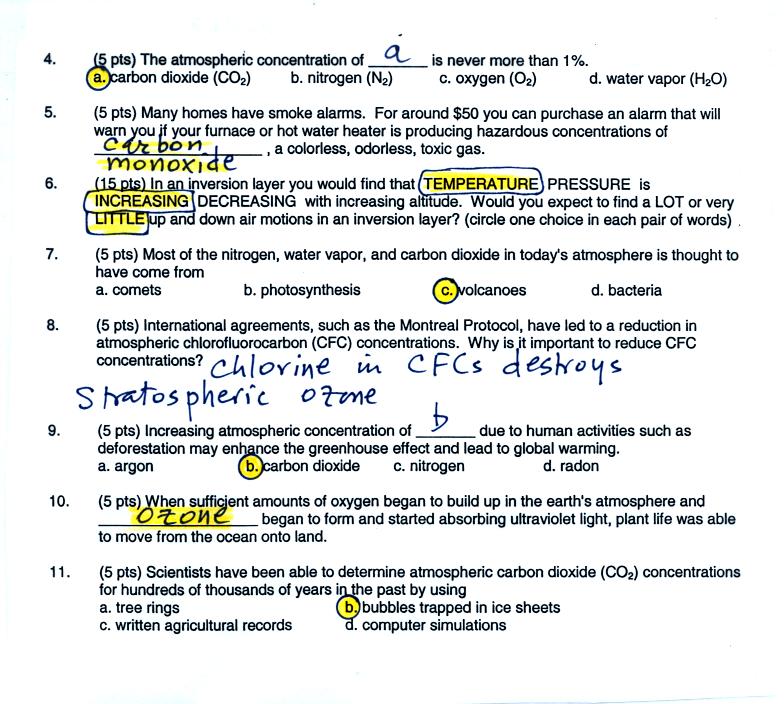Practice Quiz Answers
It is OK in questions like #1 or #2 to either circle the correct
answer(s) or to fill in the blank with the correct answer(s). In
Question #3, the order of the answers is important. You must fill
in the blanks in questions like this.
In Question #2, carbon dioxide concentrations peak in the winter
because plants are dead or dormant and the amount of photosynthesis
(which removes CO2 from the air, decreases. Carbon monoxide is a
winter morning pollutant. Ozone by comparison is a summer
afternoon pollutant. You might remember that dew point
temperatures in Tucson are in the 50s and 60s during the summer
thunderstorm season. Dew point is a measure of atmospheric water
vapor concentration, so the highest water vapor concentrations are in
the summer when dew points are high.
Question #3 was turned into a 20 pt question, not a 15 pt question as
shown on the quiz.

Tree rings and written agricultural records have been used to
determine temperatures in the past, but not carbon dioxide
concentration. To determine carbon dioxide concentration,
scientists have analyzed the air trapped in bubbles in ice sheets.

Man adds much less carbon dioxide to the atmosphere than nature.
Natural processes are balanced by equal rates of removal, this is not
true of anthropogenic release of CO2.

I should probably used the word "complete" in Extra Credit Question #1,
instead of "clean."






